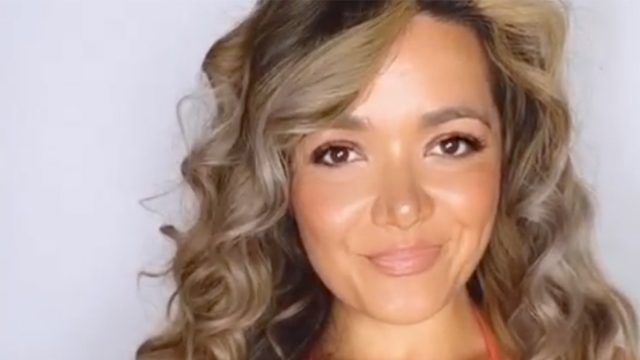5 Signs Your Belly Fat Is Actually a Hormone Problem, Says Food Scientist

Do you eat healthy, exercise regularly, but still struggle with stubborn belly fat? You're not alone. Many women face this frustrating challenge, which might be linked to hormonal imbalances rather than diet or exercise habits alone.Christine Hronec, founder and CEO of Gauge Girl Training, brings her unique expertise as a food scientist, engineer, and former national bikini competitor to help you understand this common issue. With her background in both the scientific and practical aspects of fitness, Christine offers valuable insights into identifying and addressing hormonal belly fat.
Why Your Hormones Might Be Behind Your Belly Fat
"The hormonal belly is a very unique type of belly," Hronec says in her post. She explains that it has a distinctive shape, typically sitting lower on the abdomen with a noticeable protrusion beneath the navel. Understanding these characteristics is the first step in addressing the root cause of your weight concerns.
Sign #1: Healthy Diet Isn't Working
The most frustrating sign, according to Hronec, is when "you are eating right, you are eating healthy, you are eating modest calories, and your waistline keeps getting bigger even though you are eating correctly." This paradox is often the first indication that hormones, not calories, are the primary issue.
Sign #2: Uncontrollable Sugar Cravings
Hronec emphasizes that these aren't your typical cravings: "It's an uncontrollable type of sugar craving, not the type of thing where it's like just that time of the month, but it's above and beyond that." She connects these intense cravings to insulin resistance, which can lead to leptin resistance – a condition where your body loses its ability to recognize when it's full.
RELATED: 8 High-Protein Foods with Nearly Zero Calories That Melt Fat
Sign #3: Persistent Mood Swings
"You are experiencing a lot of mood swings," notes Hronec, highlighting this as a clear indicator of hormone imbalance. These emotional fluctuations often accompany physical symptoms and shouldn't be dismissed as just stress or fatigue.
Sign #4: High Stress Levels
"High levels of stress can increase the cortisol hormone levels," Hronec explains. She emphasizes a critical point: "When cortisol hormone goes up, what ends up happening is it sends the signal to your body to store even more fat." This creates a challenging cycle where stress directly contributes to belly fat accumulation.
Sign #5: Exhaustion Without Rest
The final sign is what Hronec describes as being "exhausted all the time but cannot sleep." This combination of fatigue and insomnia often indicates an underlying hormonal imbalance that needs addressing.
The Science Behind Hormonal Belly
Hronec explains that hormonal imbalances, particularly with estrogen and insulin, can create a "biochemical shitstorm for fat gain." She emphasizes that when you're not ovulating regularly or are in perimenopause or menopause, your body may struggle to detox excess estrogens, leading to increased fat storage.
Your Action Plan
Rather than drastically cutting calories, Hronec recommends a specific approach: "Bring your calorie level up to maintenance. Increase your healthy fats. Increase your protein. Reduce your carbohydrates with respect to starchy carbs." She particularly emphasizes fiber intake, recommending 30-50 grams daily for the first week, then maintaining at least 30 grams thereafter.
Testing and Support
"You can definitely get your hormones tested to actually confirm if you have a hormone imbalance," advises Hronec. She specifically recommends testing estrogen (estradiol) and progesterone levels. For additional support, she suggests considering foods rich in indole-3-carbinol, such as kale and Brussels sprouts, or taking it as a supplement to help naturally detox excess estrogens.
Remember, addressing hormonal belly fat requires a different approach than traditional weight loss methods. By recognizing these signs and taking appropriate action, you can develop a more effective strategy for your specific situation. As Hronec emphasizes, "It's not going to be good enough to just exercise more, and it's not going to be good enough to just eat less, if you really want this to go away." And if you enjoyed this article, take advantage of these 15 Quick Ways to Lose Body Fat Percentage in a Week.




